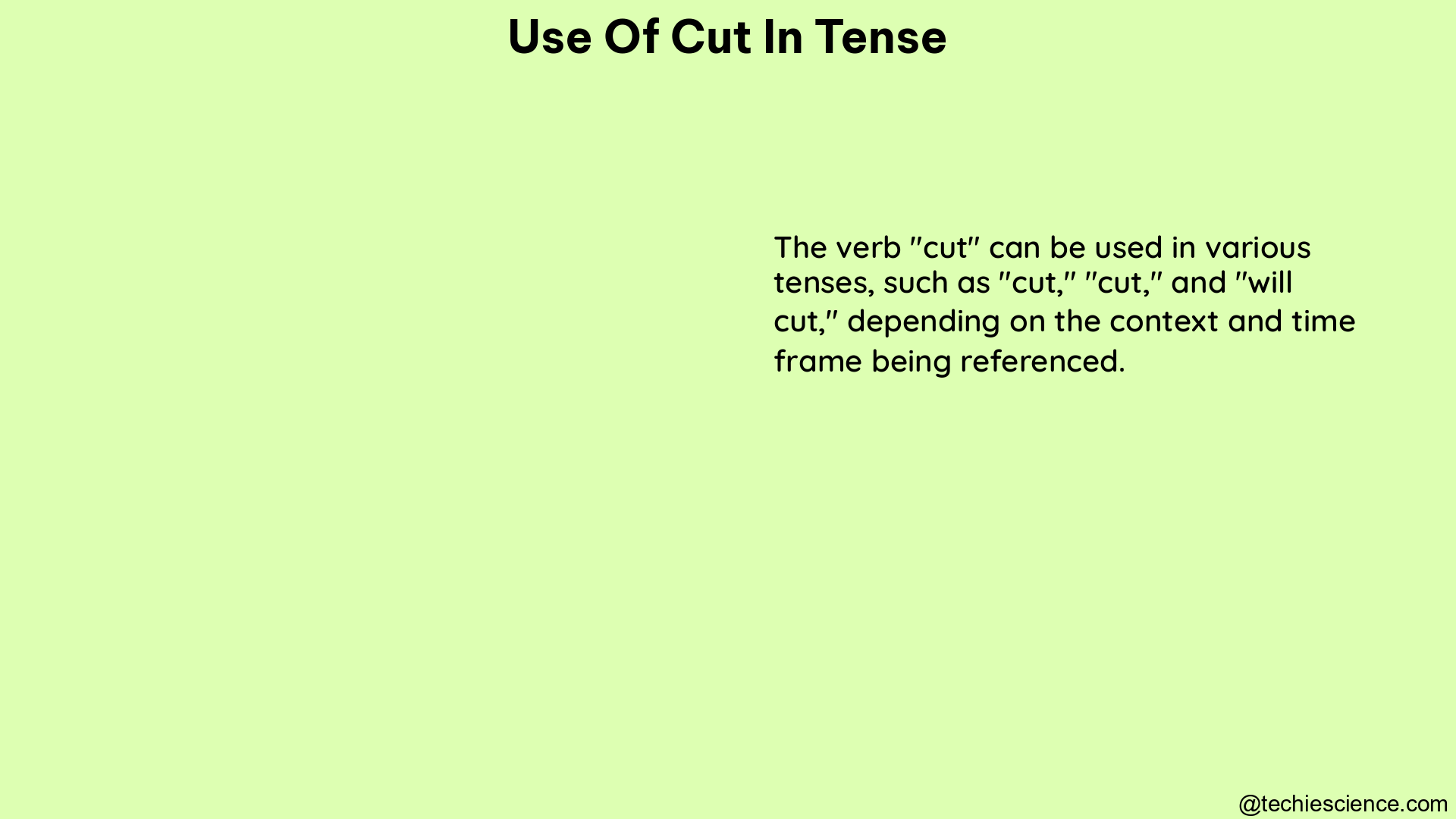The verb “cut” is a versatile word in the English language, and its usage in different tenses can be a source of confusion for many learners. This comprehensive guide will delve into the specific grammatical rules and subject-verb agreements associated with the use of “cut” across various tenses, providing you with a thorough understanding of this essential aspect of English grammar.
Present Simple Tense
Singular Subjects
In the present simple tense, the verb “cut” becomes “cuts” when the subject is singular. This subject-verb agreement is crucial for maintaining grammatical correctness.
Example: He cuts the grass.
Plural Subjects
When the subject is plural in the present simple tense, the verb “cut” remains the same, without any modification.
Example: They cut the grass.
Past Simple Tense

All Subjects
Regardless of the subject, the verb “cut” remains the same in the past simple tense.
Example: He cut the grass.
Present Perfect Tense
All Subjects
In the present perfect tense, the past participle “cut” is used for all subjects.
Example: He has cut the grass.
Past Perfect Tense
All Subjects
Similar to the present perfect tense, the past participle “cut” is used for all subjects in the past perfect tense.
Example: He had cut the grass.
Future Tense
All Subjects
When expressing the future tense, the verb “cut” becomes “will cut” for all subjects.
Example: He will cut the grass.
Conditional Tense
All Subjects
In the conditional tense, the verb “cut” becomes “would cut” for all subjects.
Example: He would cut the grass.
Imperative
All Subjects
The verb “cut” is used in its base form in the imperative mood, regardless of the subject.
Example: Cut the grass.
Irregular Verb Conjugation
It’s important to note that the past tense and past participle of the verb “cut” are both “cut,” not “cutted.” This is an irregular verb conjugation that must be memorized.
Examples of “Cut” in Different Contexts
- Cutting classes: Tom often cuts classes. (Present simple, singular subject)
- Cutting the cake: My mother cut the cake. (Past simple, singular subject)
- Cutting well: This knife cuts well. (Present simple, singular subject)
Key Points
- The past tense and past participle of “cut” are both “cut,” not “cutted.”
- The verb “cut” follows the standard subject-verb agreement rules for singular and plural subjects in different tenses.
References

Hi…. I am Goutam Datta. I have completed a double M. A. in English and B. Ed. I am a creative writer. Currently, I am a part of the LambdaGeeks.